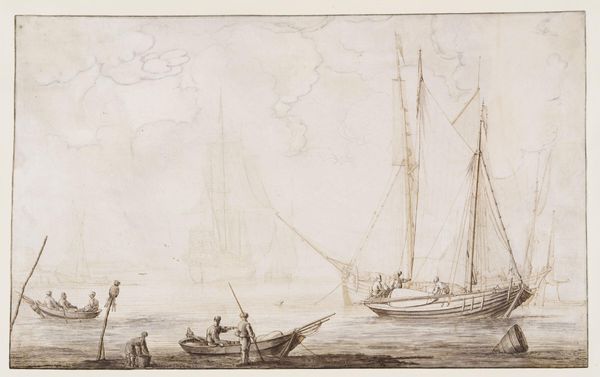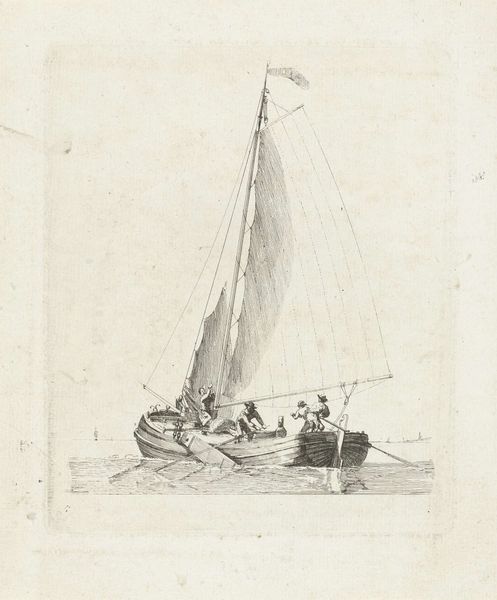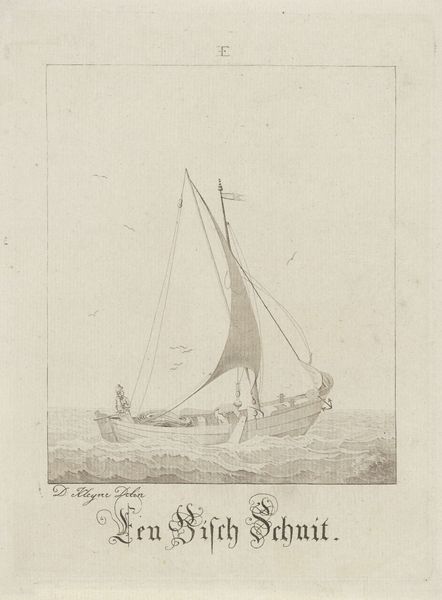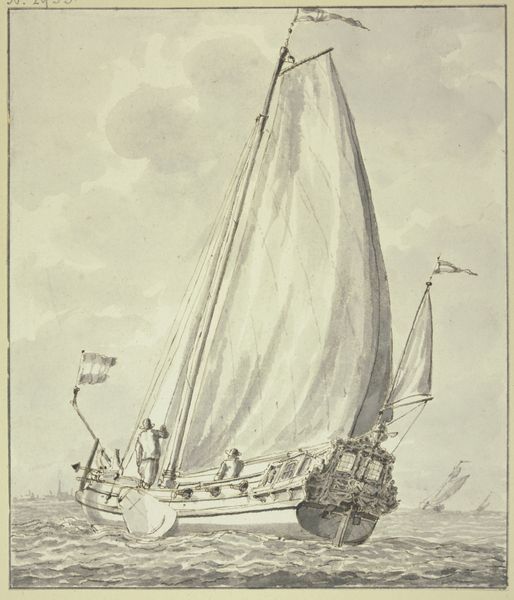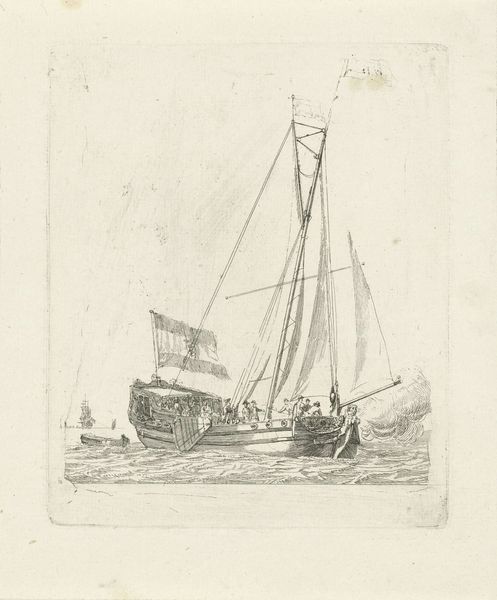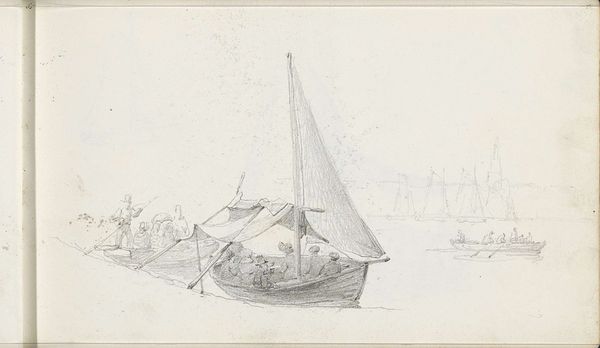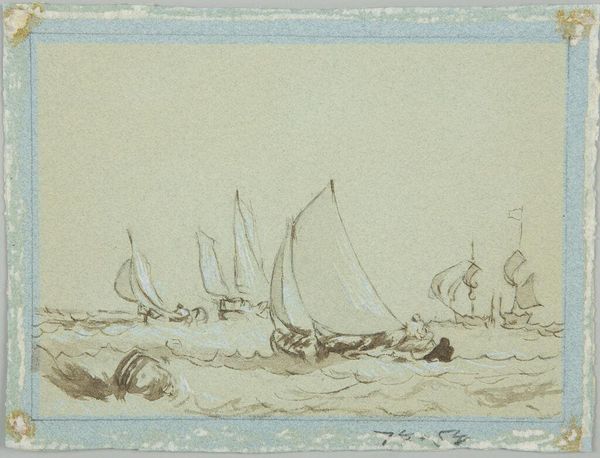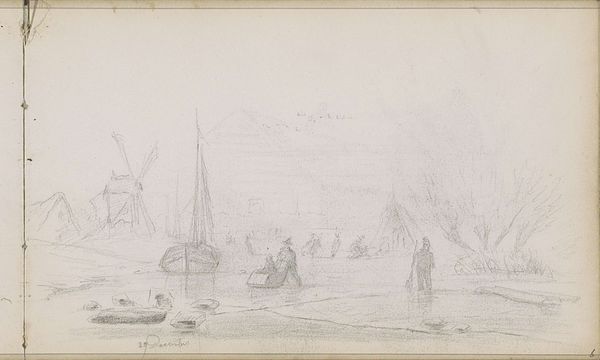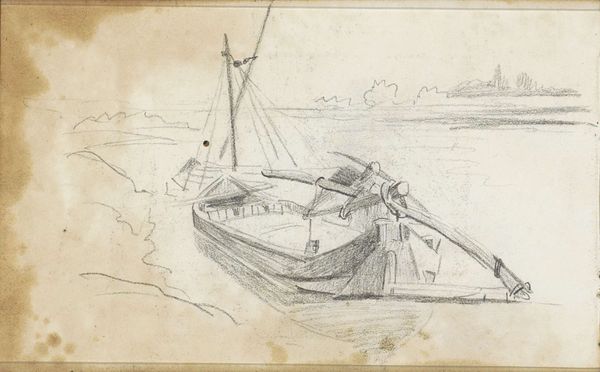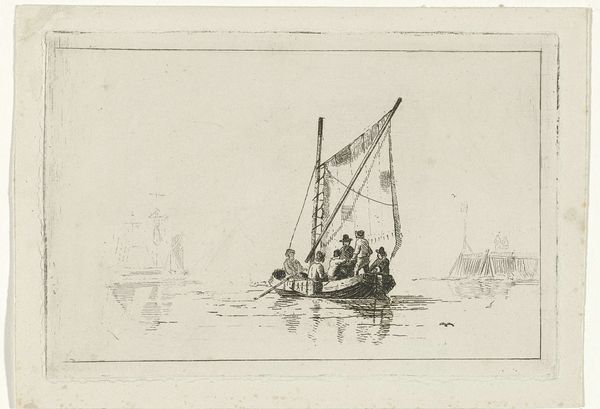
Copyright: Rijks Museum: Open Domain
Curator: This delicate pen and ink drawing is titled "Figuren in een schuit op het Bodenmeer," which translates to "Figures in a boat on Lake Constance." It's by Johannes Tavenraat, created between 1858 and 1859. It resides here, at the Rijksmuseum. Editor: My first impression is the feeling of gentle movement. The lines are so light, capturing the water's surface and the sky’s haze almost ethereally. The materiality seems to be defined by these almost transparent, floating shapes. Curator: It does have an understated, almost transient quality, doesn't it? Knowing this dates to the late 1850s, during a period of considerable social upheaval, one could interpret the figures in the boat as symbolic of individuals navigating an uncertain future. What do you make of that flat surface loaded on the deck of the sailboat? Editor: Yes, the historical backdrop adds layers. To me, that seemingly haphazard pile suggests timber, likely sourced from the surrounding landscapes and destined for somewhere else. It underscores how resources were exploited and commodified in the 19th century, especially on Europe's periphery. The value and work invested into the production, transportation, and utilization of those materials really speak to that period’s core values. Curator: A fascinating perspective! This work exists within a broader framework of romantic landscape art but arguably disrupts traditional notions of the picturesque. By depicting laborers amidst nature, Tavenraat blurs class boundaries. Editor: Precisely. This piece subtly interrogates class, showing us both a landscape of beauty and a landscape of labor and capital. Also note the technique; it’s rudimentary. This wasn’t for show, but for work, documentation. Curator: Absolutely, and considering its creation during a time when gender roles were extremely defined, it invites reflection on the representation of masculinity and the male gaze within landscape art. Editor: A crucial point! Bringing that gendered lens and a sensitivity to production provides an insight into our current moment, where we still grapple with how labor, gender and nature are so often presented— and whose stories go unseen or untold. Curator: Indeed. It really highlights how a seemingly simple sketch can resonate with such profound historical, social, and theoretical implications. Editor: For me, it underscores the enduring importance of recognizing the materials, processes, and broader structures that inform seemingly straightforward artworks and landscapes.
Comments
No comments
Be the first to comment and join the conversation on the ultimate creative platform.

